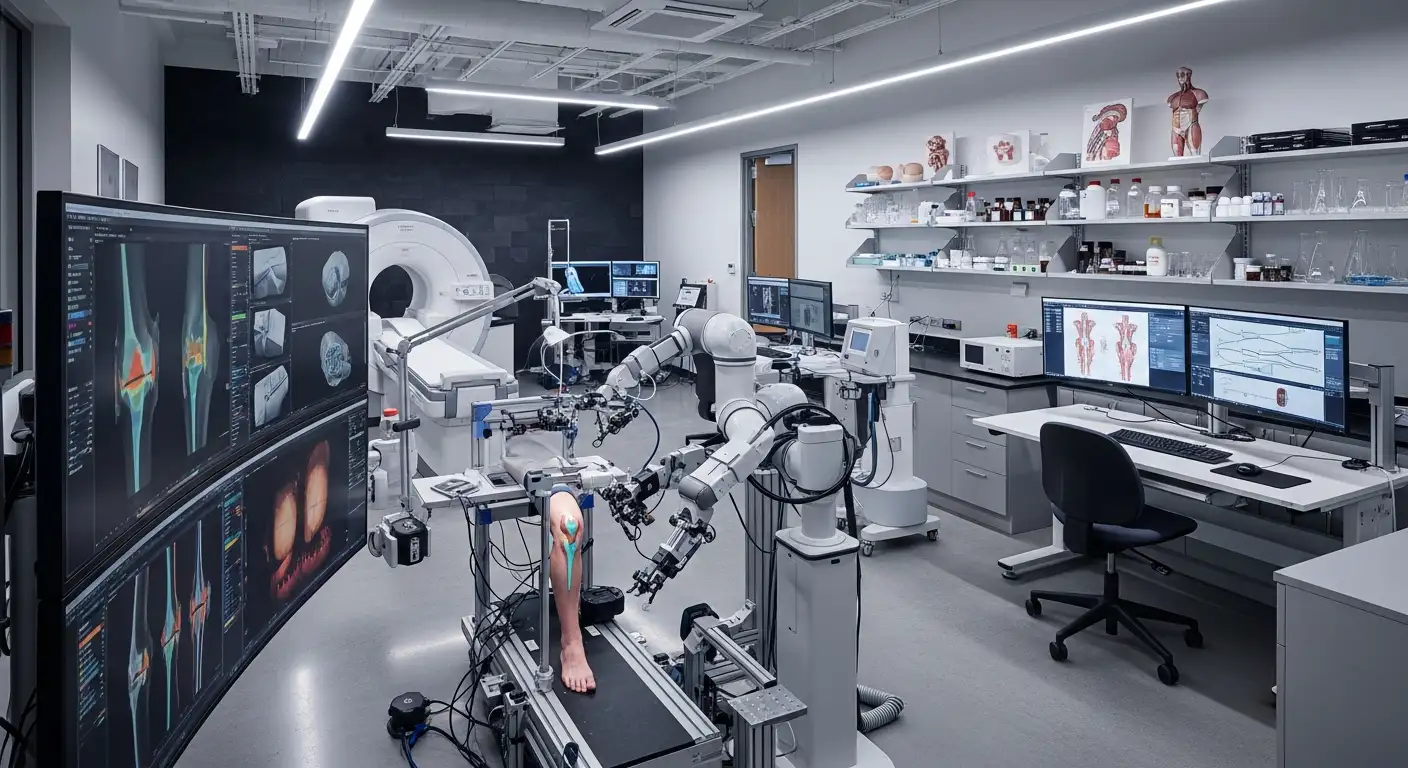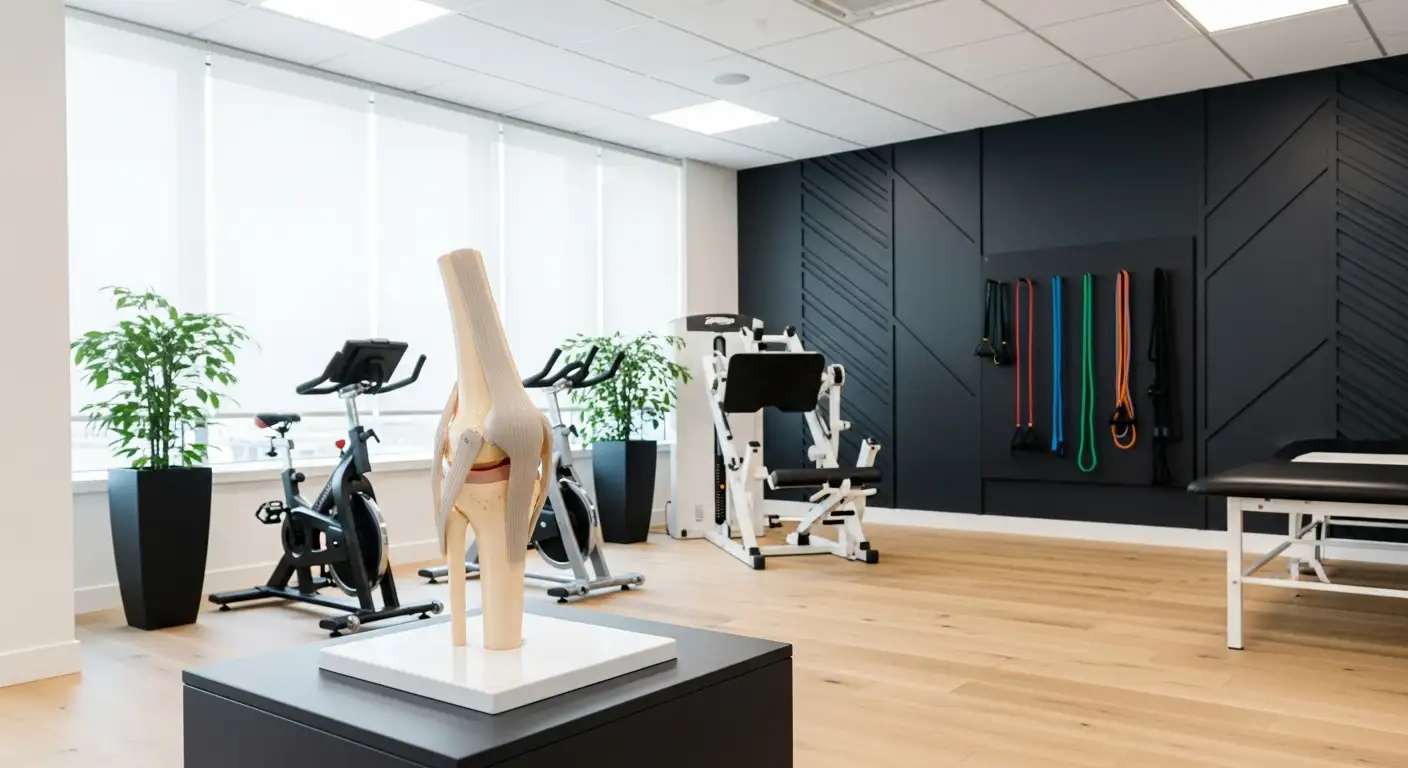Understanding MCL Injuries
MCL (Medial Collateral Ligament) injuries are a common type of knee injury that can occur due to various causes. Understanding the causes and impact of MCL tears is essential for proper management and treatment.

Causes of MCL Injuries
MCL injuries can happen through different mechanisms. Twisting the knee, direct impact when the knee is bent, or contact sports like football can all lead to MCL tears. These injuries often occur when the knee is forced inward, causing stress on the MCL ligament. It is important to wear a knee brace to prevent further injury to the knee and surrounding ligaments. MCL/LCL braces are recommended for athletes and active individuals, as they provide support and stability to the knee, reducing the risk of further damage [1].
Impact of MCL Tears
MCL tears are the most common knee ligament injury, accounting for approximately 40% of all knee injuries. They can cause pain, swelling, and instability in the knee joint. The severity of the impact depends on the extent of the tear. In some cases, MCL tears can be managed with non-surgical treatments such as physical therapy and wearing a knee brace. However, more severe tears may require surgical intervention to repair the ligament.
MCL sprains have been observed as the third most common injury in professional European soccer players, with an average of 23 days lost playing due to MCL injury. Sports like football, skiing, basketball, and volleyball also have a high incidence of MCL sprains [3]. These injuries can significantly impact an individual's ability to participate in physical activities and sports.
Research has shown that exercises focusing on thigh and hip muscles, balance, strength, and power can help lower the risk of MCL tears. For example, in football linemen, the use of braces has been shown to prevent MCL injuries. It's important to take preventive measures and engage in proper training to reduce the likelihood of MCL injuries.
Understanding the causes and impact of MCL injuries is crucial for individuals who engage in activities that put stress on the knee joint. By wearing appropriate knee braces and taking preventive measures, individuals can minimize the risk of MCL tears and protect their knee health.
Importance of Knee Braces
When it comes to knee injuries, knee braces play a crucial role in providing support, stability, and protection. This is especially true for individuals with medial collateral ligament (MCL) injuries. Understanding the role and benefits of knee braces can help individuals make informed decisions about their injury management and recovery.

Role of Knee Braces
In the case of MCL injuries, knee braces serve as an external support system for the knee joint. They help to stabilize the knee, limiting excessive side-to-side movement and preventing further injury to the MCL and surrounding ligaments. By providing additional support, knee braces can help individuals regain confidence in their knee's stability and reduce the risk of re-injury.
Wearing a knee brace is particularly important during activities that put the knee at risk, such as sports or any tasks that involve sudden movements or changes in direction. For athletes and active individuals, using a knee brace can help protect the knee and provide peace of mind while engaging in physical activities.
Benefits of Knee Braces
Knee braces offer several benefits for individuals with MCL injuries:
When choosing a knee brace for an MCL injury, it is essential to consider factors such as the severity of the injury, the level of support required, and personal comfort. Consulting with a healthcare professional can help determine the most suitable knee brace for individual needs. For specific recommendations, you may explore options like McDavid's knee braces that are designed specifically for MCL tears and injuries, offering tailored support and protection [4].
By utilizing a knee brace, individuals with MCL injuries can enhance their recovery process, regain mobility, and gradually return to their normal activities. However, it is important to note that knee braces are not a substitute for proper medical evaluation and treatment. If you suspect an MCL injury or experience persistent knee pain, it is advisable to seek professional medical advice for an accurate diagnosis and appropriate treatment.
Top Knee Brace Recommendations
When it comes to finding the best knee brace for MCL injury, there are several options available that offer support and protection tailored to these specific conditions. Two highly recommended knee braces are McDavid's Knee Braces and the Bauerfeind Genutrain S Knee Brace.
McDavid's Knee Braces
McDavid offers a range of knee braces specifically designed for MCL tears and injuries. These knee braces provide targeted compression and support, offering relief for minor pain, sprains, and instabilities related to MCL injuries [4]. One of their top-quality knee braces is the Elite Bio-Logix™ Knee Brace. This brace is designed to provide advanced joint support and therapeutic recovery, making it an excellent choice for individuals with MCL injuries.
McDavid's knee braces are known for their durability and effectiveness in providing stability to the knee. These braces are designed to help alleviate discomfort and promote healing. With their targeted compression and support, McDavid's knee braces can enhance stability, reduce swelling, and aid in the recovery process.

Bauerfeind Genutrain S Knee Brace
Another top recommendation for individuals with MCL injuries is the Bauerfeind Genutrain S Knee Brace. This knee brace is specifically recommended for slight instability, arthritis, or osteoarthritis of the knee. It provides intermittent compression massage to activate the musculature and stimulate the healing process [5].
The Bauerfeind Genutrain S Knee Brace offers a combination of stability and comfort. It is designed to provide support to the knee while allowing for a range of motion. The brace's compression and massage effect help to reduce swelling and promote blood circulation, aiding in the recovery of MCL injuries.
When choosing a knee brace for an MCL injury, it's important to consider the severity of the injury, personal comfort, and the level of support needed. Consulting with a healthcare professional or orthopedic specialist can help determine the most suitable knee brace for your specific condition.
Remember, knee braces are not a substitute for proper medical care. If you suspect an MCL injury, it is crucial to seek medical attention to ensure an accurate diagnosis and appropriate treatment.
Considerations for Choosing a Knee Brace
When selecting a knee brace for an MCL injury, there are several important considerations to keep in mind. Two key factors to focus on are stability and support, as well as comfort and fit.
Stability and Support
The primary purpose of a knee brace for an MCL injury is to provide stability and support to the injured ligament. The stability offered by the brace helps to prevent excessive side-to-side movement of the knee, reducing the risk of further damage and promoting the healing process.
Hinged knee braces are often considered the most effective for MCL sprains. These braces feature metal or carbon fiber rods on the sides, providing additional stability to the knee joint [6]. The hinged design allows the knee to bend and straighten while limiting side-to-side movement, mimicking the function of the MCL and reducing strain on the injured ligament.
For more severe MCL tears, a brace that comes high up the thigh and low down on the shin may be necessary. This design, often with a hinge that can be locked in place, provides the most stability and support, restricting full knee straightening if required [7]. It is crucial to consult with a healthcare professional to determine the appropriate level of stability needed based on the severity of the MCL injury.
Comfort and Fit
In addition to stability and support, comfort and fit play a vital role in choosing the right knee brace for an MCL injury. A properly fitting brace should feel snug but not overly tight, ensuring that it stays in place during movement while allowing for proper circulation.
It is recommended to select a knee brace with adjustable straps or closures, as this allows for a more customized fit. Adjustable straps also provide flexibility in adjusting the tension and compression applied to the knee, promoting optimal comfort and support.
When trying on a knee brace, pay attention to any potential pressure points or discomfort. The brace should not cause pain or impede natural movement. If possible, consider trying different sizes or models to find the one that offers the best fit for your specific needs.
Remember, the effectiveness of a knee brace is heavily dependent on its proper use and fit. It is essential to follow the manufacturer's instructions for fitting and adjusting the brace to ensure optimal support and protection for your MCL injury.
By considering the stability and support provided by the knee brace, as well as prioritizing comfort and fit, you can select a brace that offers the best combination of support and convenience for your MCL injury. It is always recommended to consult with a healthcare professional or orthopedic specialist to determine the most suitable knee brace based on the severity of your MCL injury and individual needs.
Effectiveness of Knee Braces
Knee braces are commonly used in the management of MCL injuries to provide support and stability to the knee joint. However, the effectiveness of knee braces in preventing or treating MCL injuries has been a topic of debate. Let's explore the studies conducted on knee bracing and the recommendations for their use.
Studies on Knee Bracing
Several studies have been conducted to evaluate the effectiveness of knee braces in preventing MCL injuries. The results of these studies have shown mixed findings. One study found that prophylactic knee bracing significantly reduced MCL injuries in football players NCBI. On the other hand, another study found that knee bracing was associated with an increase in knee injuries NCBI.
For instance, a study conducted by Sitler et al. showed that prophylactic knee bracing significantly reduced MCL and overall knee injuries in military cadets participating in intramural tackle football NCBI. However, a separate study by Grace et al. found that high school football players using single-hinged braces had more knee injuries compared to a matched nonbraced group, with a significant increase in ankle and foot injuries in braced players NCBI.
While these studies provide valuable insights into the effectiveness of knee bracing, it is important to note that individual results may vary. Factors such as the type and severity of the MCL injury, the specific brace used, and the activity level of the individual can influence the outcomes.
Recommendations for Brace Use
Based on current expert opinion, the use of knee braces for MCL injuries is recommended with specific guidelines. The severity of the MCL injury plays a role in determining the duration of brace wear.
When choosing a knee brace for MCL injuries, stability and support are crucial factors to consider. The most stable knee braces for MCL tears are those that extend high up the thigh and low down on the shin, often equipped with a hinge that can be locked to restrict full knee straightening, which may be necessary for Grade 3 tears Sports Injury Physio.
It is important to consult with a healthcare professional, such as a sports medicine specialist or physiotherapist, to determine the appropriate use and duration of knee braces for MCL injuries. They can provide personalized recommendations based on the specific needs and circumstances of each individual.
While knee braces can offer support and stability for MCL injuries, they should be used as part of a comprehensive treatment plan that may include physiotherapy and other rehabilitation strategies. The combination of appropriate brace use and guided rehabilitation can contribute to the recovery and rehabilitation process for individuals with MCL injuries.
Recovery and Rehabilitation
When it comes to recovering from an MCL injury, a comprehensive approach that combines physiotherapy and the use of knee braces is often recommended. This section will explore the role of physiotherapy in post-injury recovery and the importance of knee bracing during the rehabilitation process.
Physiotherapy Post-Injury
Physiotherapy plays a crucial role in the recovery and rehabilitation of MCL injuries. A qualified physiotherapist can provide personalized treatment plans that focus on strengthening the knee, improving range of motion, and restoring functional abilities. Through a combination of exercises, manual therapy, and other modalities, physiotherapy aims to promote healing, reduce pain, and enhance overall knee function.
During the early stages of recovery, physiotherapy may involve gentle exercises to improve knee mobility and stability. As the healing progresses, the physiotherapist will gradually introduce more challenging exercises to target specific muscle groups and promote overall knee strength. They will also guide you on proper techniques for walking, climbing stairs, and performing daily activities to avoid putting excessive strain on the injured knee.
Physiotherapy post-injury is a collaborative process that requires active participation and commitment from the individual. Adhering to the prescribed exercises, attending regular therapy sessions, and communicating any concerns or progress to the physiotherapist are essential for an effective recovery.
Role of Knee Bracing in Recovery
After an MCL injury, the use of knee braces is often initiated for protective and rehabilitative purposes. Simple hinged knee braces are commonly prescribed to manage rehabilitation from an MCL injury. These braces provide stability and support to the knee joint, helping to prevent further injury and promote healing.
The type of knee brace recommended depends on the severity of the MCL injury. According to expert opinions, individuals with Grade 1 MCL sprains may not require a brace, while those with Grade 2 tears typically benefit from wearing a brace for at least three weeks. For Grade 3 tears, a brace may be necessary for a minimum of six weeks. It's important to consult with a healthcare professional to determine the most appropriate duration and type of brace for your specific injury.
The most stable knee braces for MCL tears are those that provide coverage high up the thigh and low down on the shin. These braces often feature a hinged design that can be locked to restrict full knee straightening, which may be necessary for Grade 3 tears [7]. It's crucial to choose a knee brace that offers a secure fit and proper alignment to ensure optimal support and stability during the recovery process.
While knee bracing can be beneficial in the rehabilitation of MCL injuries, it's important to note that prophylactic knee braces (designed to protect uninjured knees) are not recommended for regular use without conclusive evidence of their effectiveness [8]. However, functional knee braces can serve as an adjunct to treatment and rehabilitation for ligamentous knee injuries, providing stabilization during rotational and anteroposterior forces. Patellofemoral knee braces have also been used to treat anterior knee disorders and have shown moderate subjective improvement without significant disadvantages.
In conclusion, combining physiotherapy with the appropriate use of knee braces can greatly contribute to the recovery and rehabilitation of MCL injuries. Physiotherapy helps strengthen the knee and restore functionality, while knee braces provide stability and support during the healing process. Working closely with healthcare professionals and following their recommendations will optimize your chances of a successful recovery and return to normal activities.
References
[2]:
[3]:
[4]:
[5]:
[6]:
[7]:
[8]:




